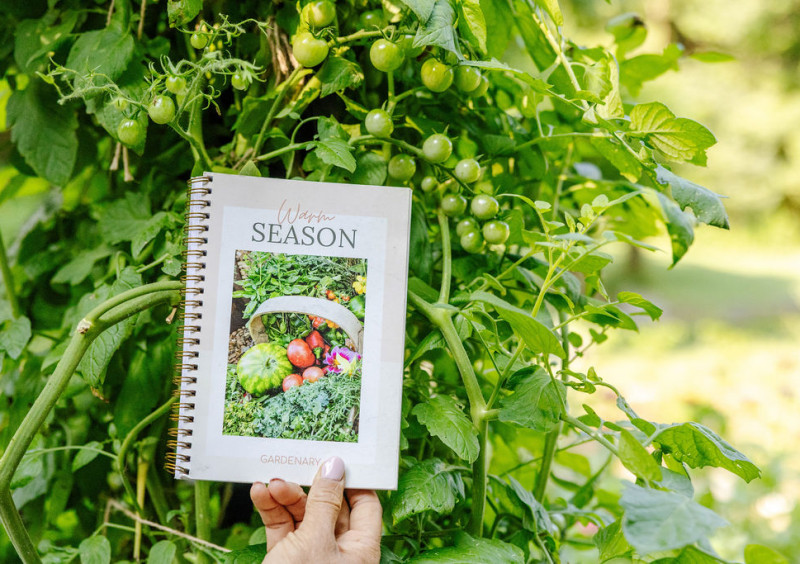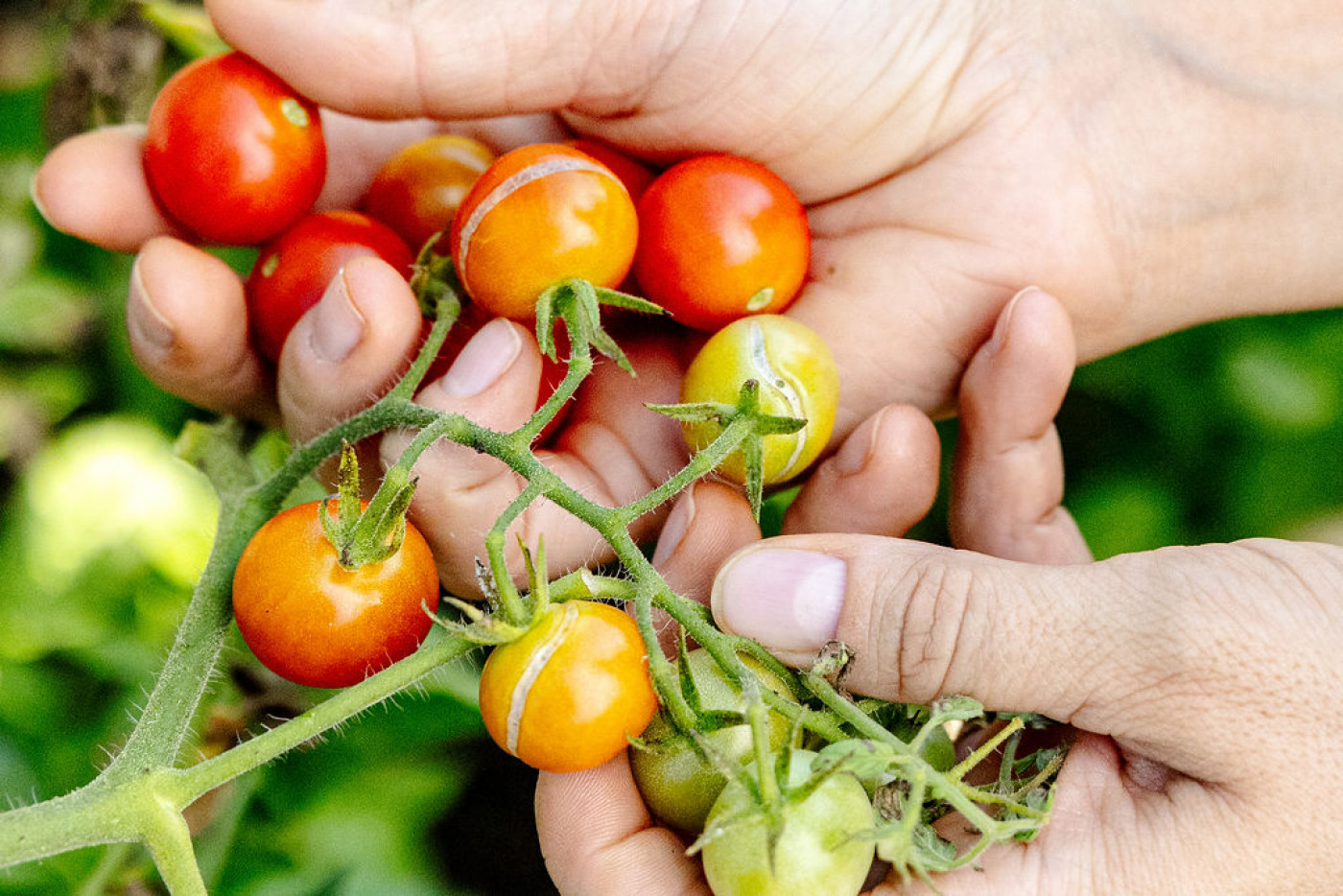Why Do Tomatoes Split or Crack? (And How Can You Prevent It?)
As much as I love growing tomatoes, fruiting plants are prone to more issues than leaves and root crops. They need to spend more time in your garden (which means there's more time for something to go wrong), and they need a lot of resources to produce.
When it comes to splitting or cracking tomatoes, the bad news is that the cause is often out of your control. The problem is, therefore, hard to prevent. The good news is your plants can recover and go on to produce tons of tasty, un-split tomatoes for you in the future.
(More good news? Your split fruits are typically still edible!)
Keep reading to learn why tomatoes split and what you can do to prevent splits from happening in your vegetable garden.
At a Glance
- Tomatoes typically split because of fluctuations in the amount of water the plant is receiving. Periods of little water followed by too much water cause the flesh to swell so fast the skin can't keep up and cracks open.
- Split tomatoes are usually still edible, but they should be removed from the plant and brought indoors ASAP.
- While splitting fruits are often a product of circumstances out of your control, you can try to prevent this issue by following best watering practices and making sure your plants have enough calcium.
What's the Problem?
Finally, a garden problem not caused by pests or disease. (Yay?) This is actually a physiological issue caused by the growing conditions in your garden.
Most splitting occurs because of too many fluctuations in the amount of water the tomato plant is receiving. Picture this: Your garden has been under a dry spell, and all of a sudden, you get heavy rain for several days. All that water gets inside the developing tomato fruit and causes it to swell so fast that the outer skin can't keep up. The result? It splits open.
The same scenario applies if you're delivering inconsistent water to your tomato plants through hand-watering or an irrigation system.
There are two different types of cracks on tomatoes: vertical splits and concentric splits.
Vertical Splits
Also called radial cracking, this type involves a split that goes from the top to the bottom of the fruit. It most often occurs during hot, humid weather, and it's considered more serious.
Concentric Cracks
This kind of cracking forms around the top of the fruits by the stem and is caused by rapid changes in soil moisture levels. It's most common in larger heirloom tomatoes and usually more superficial—and therefore less severe—than vertical splits.
What to Do When Tomatoes Split
If the cracking is superficial, as is sometimes the case with concentric splits, you can allow the fruit to continue ripening on the vine. Just keep an eye on it.
If the crack exposes the flesh, you'll want to harvest the fruit immediately. Split tomatoes are susceptible to rotting on the vine and invite pest and disease issues.
You may be able to continue ripening fruits that were already blushing indoors, away from potential problems. Green tomatoes (mature but unripe) will most likely rot before they fully ripen.
→ Learn more about the different stages of ripening.
Can You Eat Tomatoes That Split?
Most split tomatoes are still edible. Give them a quick inspection to check for signs of insects or rot. Toss any fruits that smell sour, ooze liquid, or feel soft to the touch, which could be an early sign of rotting. If everything looks good, I typically just cut off the part that's split and toss the tomato into my next salad bowl.
Keep in mind these tomatoes aren't for storage. Cook or eat them fresh as soon as possible so you don't waste the fruits of your labor.
How to Prevent Tomatoes From Splitting
Splitting fruits is not a sign that you're a bad gardener; it happens to everyone. You can't, after all, control the weather. That being said, there are a couple steps you can take to prevent tons of fruits from splitting.
Pick Tomatoes Early
Check the weather forecast. If the weather has been dry and you haven't been supplemental watering consistently, pull any tomatoes that are blushing before a rainstorm hits. Again, you can continue to ripen these tomatoes indoors on a windowsill as long as they've reached their mature size. You might just sacrifice a bit of that vine-ripened flavor.
Buy Split-Resistant Varieties
The next time you're buying seeds, look for tomato varieties that are less prone to splitting. Even these tomatoes might crack, but they can usually handle moisture fluctuations a bit better. Some of my favorite tomato types that are also split-resistant include Juliets, San Marzanos, Sweet Millions, and Sun Golds.
Shop Gardenary's Tomato and Pepper Seed Collection
Our Tomato & Pepper Collection is perfect for gardeners who love bold flavors and beautiful variety. This set includes 6 tomato varieties—from juicy slicers to bite-sized cherries—and 5 pepper varieties ranging from sweet and crisp to delightfully spicy.
Keep Soil Moisture Consistent
Fruiting plants need a lot of water to produce their delicious offerings, as much as 1 to 2 inches per week, depending on your climate. This water is best delivered with a few deep soaks a week, rather than more frequent but shallow watering. Conserve moisture in between waterings by spreading a thin layer of compost over your soil surface and by planting intensively around your tomatoes.
If you mostly rely on Mother Nature to water your garden for you, it's good to have a backup plan in place during times of drought. I recommend setting up a simple drip irrigation system that will deliver water consistently to your garden, right at the root level, where plants need it most. You can automate this system with a timer, and then you'd simply turn it off if you've gotten enough rain or are expecting a good storm soon.
Check on plants growing in grow bags or containers more often since the soil will dry out faster. If you stick your finger into the soil and it feels dry about an inch down, it's time to water.
One last watering tip: make sure to aim your water at the roots, not the leaves. Keeping tomato leaves dry helps you avoid fungal diseases.
→ Learn more ways to water raised beds.
Fertilize Correctly
Start by growing tomatoes in a nutrient-rich soil mix with good drainage. Once your plants are flowering and fruiting, add a natural source of phosphorus like bone meal, fish bone meal, or rock phosphate. Meals have the added benefit of adding calcium, which can prevent not only splitting but blossom end rot, as well.
Avoid fertilizers high in nitrogen, which can promote leafy growth over fruiting and even cause cracking.
→ Learn more about fertilizing tomato plants.
Gardenary's Warm Season Garden Planner
This beautifully designed planner takes the guesswork out of gardening and helps you stay organized, inspired, and on track during the warmer months.

Other Common Tomato Issues
Here are some other issues you may face with rainy weather or over-watering.
Blossom End Rot
Watering issues or damaging a plant's roots can affect the plant's ability to absorb calcium from the soil, leading to blossom end rot. The problem can also be caused by soil that’s deficient in calcium to begin with. What happens is the tissue on the bottom of the fruit breaks down and rots. These spots can eventually turn black and leathery as bacteria and fungi make themselves at home.
If you notice a dark brown spot on the bottom of a fruit, remove it and toss it in the trash. Add a calcium-rich fertilizer like bone meal or lime, and try to water more consistently. This nutrient deficiency tends to affect the first couple of fruits, so you may still be able to get a fruit harvest. If the issue persists, consider getting a soil test done so you can address any nutrient deficiencies.a
Shop Our Soil Test Kit for Your Garden
My Soil Test Kit is the most accurate and easy-to-use soil test kit for DIYers. You’ll receive a report from a professional lab detailing the pH of your soil, plus 13 plant-available nutrient levels.
Tomato Leaf Curling
Several different issues, including overly wet conditions, can cause tomato leaves to curl. It's usually not a serious concern and won't affect your harvests. Some tomato varieties are more prone to leaf curling than others.
Early Blight
This common fungal disease causes circular brown lesions on the leaves, stems, and fruit. It's most prevalent during warm, wet periods. It can reduce your tomato yield and also cause fruit to crack open or rot. Prune any leaves and fruits that are affected and improve the growing conditions in your garden. You can still get a harvest if you keep the fungus under control. (And remember, avoid watering or splashing water up onto the leaves of your plants.)
Splitting Tomatoes FAQ
How do I keep my tomatoes from splitting on the vine?
To prevent your tomatoes from splitting, water consistently, harvest ripe and partially ripe fruits before an anticipated rainstorm, add a natural source of calcium once your plants start flowering, and buy split-resistant varieties.
Can you fix a tomato plant with split fruits?
The good news is split fruits do not mean your plant is necessarily diseased and beyond saving. Remove any fruits that are split and then follow better watering practices. You're likely to get more harvests from the plant.
Why are my tomatoes splitting apart?
Tomatoes typically split when the plant has been under- and then overwatered. They also split due to soggy soil from too much rain, a calcium deficiency, over-ripening, or too much sunlight.
What can I do with tomatoes that have split?
As long as you don't notice any signs of pests or rot (e.g., a sour smell, a soft texture, or liquid oozing out), split tomatoes are perfectly fine to eat. Give them a good rinse under running water and enjoy ASAP. Cut off the split part if it bothers you.
What nutrient deficiency causes tomato fruit cracking?
The most likely culprit is a calcium deficiency in the soil. Consider testing your soil to address any issues, and add a natural source of calcium, like bone meal. Phosphorus and potassium are also important for healthy fruit production.
Why do some tomatoes split after picking?
Tomatoes might split after picking if they're overripe. If this happens, the fruits are still a-okay to eat.






